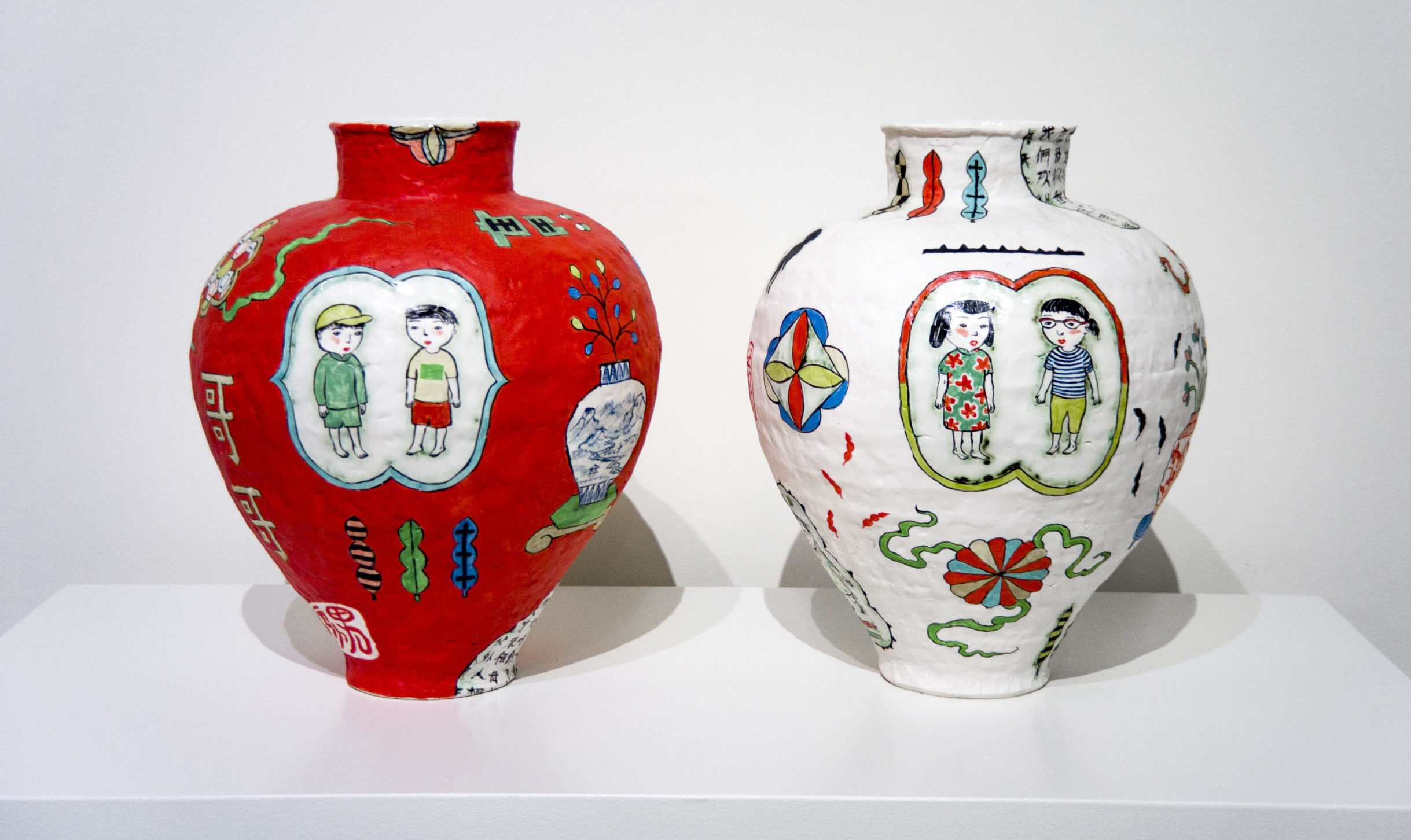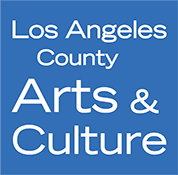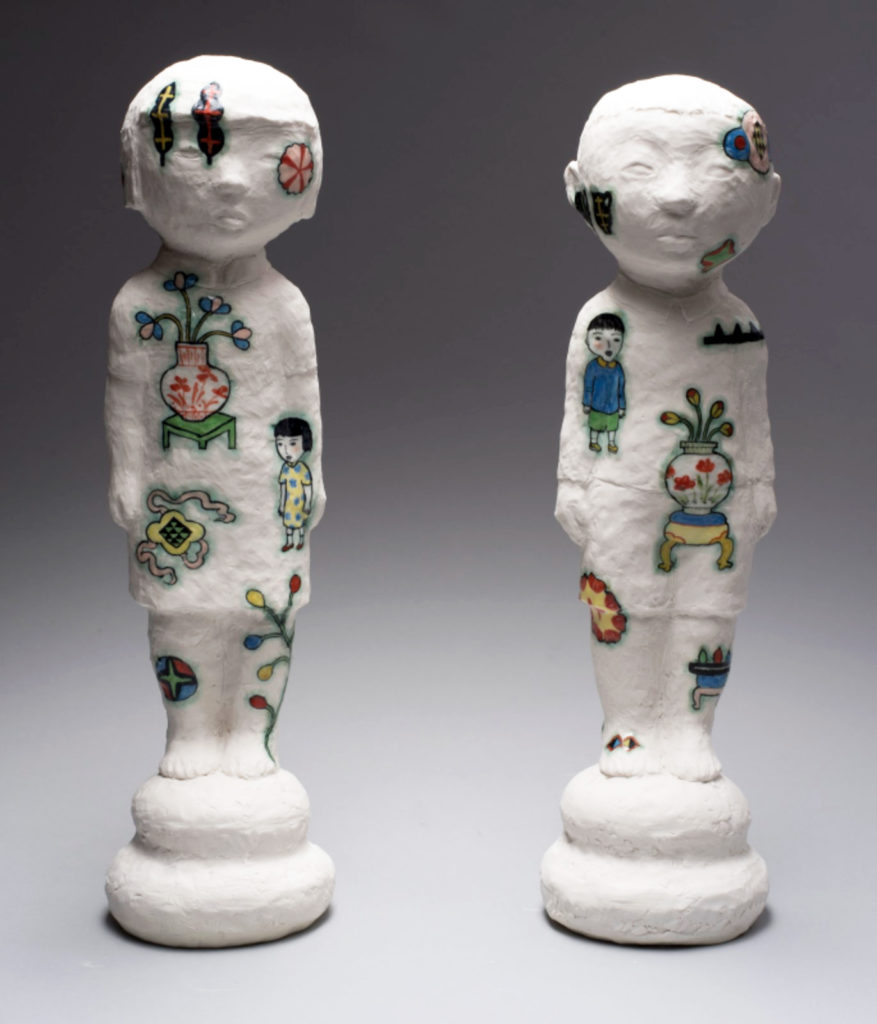
High-resolution Images • Press Release (pdf) • Reception
| On View: | March 14, 2020 – February 21, 2021 |
| Reception: | Postponed by state pandemic orders – new date to be announced. |
| Catalog: | Making in Between |
Making in Between: Contemporary Chinese American Ceramics – Exhibition Overview
The United States of America is frequently described as a “nation of immigrants,” and the reasons for immigration are diverse – the search for better economic opportunities, the escape from persecution and pursuit of sanctuary, or to reunite with family or loved ones.
Today, almost 90 million immigrants and individuals with Chinese heritage live in the United States. Making In Between: Contemporary Chinese American Ceramics highlights the work of six, first- and second-generation Chinese-American ceramic artists. The works of these artists share themes of cultural heritage, identity, language, politics, migration, and displacement. While their works are unmistakably individual, they share a rich heritage shaped by their American and Chinese experiences.
Jennifer Ling Datchuk (b. 1980) is a child of a Chinese immigrant and grandchild of Russian and Irish immigrants. Her work transports the familiar to the strange, imbuing common domestic items with symbolic questions of identity, place, and belonging.
“My work has always dealt with identity, with the sense of being in-between, an imposter, neither fully Chinese nor Caucasian. I have learned to live with the constant question about my appearance: “What are you?“
Sin-ying Ho (b. 1963) was raised in Hong Kong before immigrating to Canada in 1992 and New York thereafter. Ho overlays figurative decals created digitally in New York on traditional ceramic forms she produces in China. Her works are amalgams of ceramic pieces fired and glazed separately, brought together as a melting pot of artistic and personal identity.
“Migration, transplanting, and growing up in a colony like Hong Kong generates a sense of displacement and involves a constant negotiation of my identity…. As the world moves towards greater globalization, many nationalities and cultures will merge together and evolve into an unknown global culture. I reference my own experience being Chinese and living in North America with the cultural collisions I have endured. This cross-cultural experience speaks to a universal phenomenon.”
Beth Lo (b. 1949) was born in Lafayette, Indiana, shortly after her parents emigrated from China. Water, a central element in many of her works, is represented with a blue/green celadon glaze, conjuring the frustration, alienation, and disaster Lo experienced during her childhood.
The birth of her son in 1987 marked a turning point in her work, which now uses calligraphy and traditional Chinese form and iconography to examine the intersection of heritage, identity, motherhood, and parenting.
Cathy Lu (b. 1984) grew up as part of the only Chinese American family in a Miami, Florida, neighborhood that was home to Cuban exiles and immigrants. “I’m uncomfortable with the phrase Asian American because I’ve always felt that having been born here, I’m just ‘American,’ but I understand that I will never be seen that way. I’ve always been surprised about how people react by the way I look – assuming that I can or can’t speak Chinese or English. If I’m in Noe Valley washing my clothes at the laundromat, people will sometimes assume I work there.”
Lu’s work explores the idea that food can be a language of home, and it deconstructs the way food (fruits, sauces, spices, and more) creates a sense of identity and belonging. By manipulating traditional imagery of Chinese art and presentation, she unpacks what it means to be trans-cultural, and how ideas of cultural “authenticity” and “tradition” interface with contemporary trans-cultural experiences.
Stephanie H. Shih (b. 1986) was raised with one younger brother by Chinese-Taiwanese parents whose love of home cooking laid the foundation of her fascination with food. “Food carries meaning for everyone but especially people who have only known life in the diaspora, whose identities are tied to a figurative homeland that exists only in the memories and experiences that this set of people [has] had.“
Her work went viral in July of 2018 when she posted photos of a new body of work – rows and rows of identical ceramic dumplings, folded and arranged by hand. Responses came from all corners of the country and from diverse communities, all united by deep nostalgia. “I think it feels important to me to create space because we don’t have a shared physical place. We have to create dialogue and that becomes the space that we have…this is ours and it’s just for us.”
Wanxin Zhang (b. 1961) was born and educated in China and graduated from the prestigious LuXun Academy of Fine Art in sculpture in 1985. A successful state artist, Zhang discovered the work of Robert Rauschenberg at the Beijing Art Museum in 1985, “before [which], [he] had no idea what was possible to express in modern art, or what it could look like.”
In 1992, he relocated to San Francisco with his wife and young child knowing little English and driven by his desire to pursue an artistic career. He immersed himself in the regional art scene, influenced by Manuel Neri, Robert Arneson, and Viola Frey. “As a Chinese person, clay is in my blood. Clay and ceramics have been an integral part of Chinese culture for millennia…At the same time, having distance from China is what freed me to utilize these materials to fit my personal narrative.”
Image: Cathy Lu, “Peach Heads,” 2018. 20 x 20 x 6 inches. Ceramic with underglaze and luster.
This exhibition is funded in part by:

Bring Some Culture to Your Inbox
399 N Garey Ave Pomona, CA 91767
909.865.3146 | info@amoca.org
The museum is open Fridays, Saturdays, and Sundays, 11 AM–4 PM. Plan your visit by clicking here.
For information about Ceramics Studio hours and availability, please click here for the Ceramics Studio.
